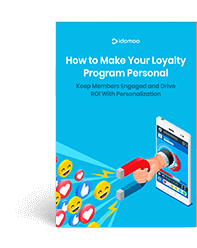While many business owners focus on marketing their products and services to new customers, it’s important to pay attention to the customers that you already have.
Your current customers are a source of repeat sales, whether you’re selling physical goods or digital marketing services. Good retention marketing practices help you build strong customer relationships over time and keep your brand top-of-mind so customers come back when they need more of your products or services.
This can have a huge impact on your CX, customer satisfaction — and profits. Research from Bain & Company shows a 5% increase in retention increases profit by 25%-95%. Ready to start? Here are our tips and tricks on how you can use retention marketing to drive long-term loyalty.
What Is Retention Marketing?
One of the most important aspects of any business is keeping your customers happy.
However, keeping your customers’ needs in mind is more than just ensuring that they’re satisfied with their current experience. It’s also about focusing on long-term strategies that can cut your churn rate, drive customer loyalty and boost your bottom line.
Retention marketing is one of these strategies — it focuses on keeping your existing customers happy and engaged instead of chasing after new ones. After all, 80% of sales come from just 20% of the customers, according to the Pareto Principle.
Consider what will boost your customer satisfaction. Make sure your current customers are a priority. We share these and other retention marketing tactics you can leverage to get started below.
Use Data To Gain Insight on Customer Needs
Data collection is the first step in a successful customer retention marketing strategy. How are you collecting information on your customers? What tools are you using to help collect this data?
When considering what metrics to measure, consider whether you’re using customer retention metrics or customer acquisition metrics. It’s important to know the difference between the two and what makes the most sense for your long-term goals.
- Customer retention metrics: These are the statistics that measure how many customers you retain over a certain period of time. For example, if your business has 1,000 customers and 10% of them renew their subscription after their first year with you (meaning they stay another year), then this is a retention metric for your business.
- Customer acquisition metrics: These are measures that show how many new customers you acquire during a certain period of time. For example, if 100 people sign up for your service in one month, but only 40 keep using it in 2 years’ time (and end up canceling), then this would be an acquisition metric for your business because 40 people out of 100 no longer use your product or service after 2 years.
Data analysis is the second step in retention marketing. Once you’ve collected the necessary data, it’s time to analyze and see if there are any trends or patterns that might help guide your retention efforts moving forward. For instance, if you notice the majority of customers who use their credit card tend to spend more than those who use cash, ask yourself why that may be.
Use data from these two steps to gain insight into what keeps your customer happy — and what may be driving them away.
Make the Most of Your Loyalty Programs
One of the best ways to retain customers and increase customer lifetime value is with loyalty programs. Loyalty programs are valuable for two reasons.
- They reward customers for their loyalty.
- They collect customer data on consumer preferences and shopping habits.
Loyalty programs are especially effective for encouraging specific behavior. For example, if you have an e-commerce store, you might offer discounts on a certain product every time someone buys that product in a given month or year. Now, consumers have an incentive to buy more of your products over time and become repeat customers.
Connect in a Way That’s Human
Using video in your marketing strategy is more than just a good idea. It’s key to your success.
While digital communications are faster, smarter and more accessible, brands are also seeing a downside. According to PWC, two thirds of consumers feel brands have lost their human touch. But there’s a way for brands to add this back — with video. Take a look at this marketing campaign from the Canadian Red Cross as an example.
The nonprofit organization created this video to thank donors and show their personal impact. By putting the faces behind their mission in a powerful video, the brand was able to build stronger connections with their members.
And donors loved receiving their very own video. The Canadian Red Cross earned 17x ROI as a result of the campaign.
Make Touchpoints, More Personal
Personalizing your marketing efforts cuts customer churn, boosts brand loyalty and improves the performance of your marketing campaigns.
You can either start out simple — or go all out. If it’s your first time leveraging this tip, try greeting your customers by name in your email campaigns. Or add a personal touch to moments of the customer lifecycle.
- Onboarding: Start the relationship off right with a personalized onboarding experience that welcomes and engages customers. Explain exactly what it is they need to know to offer helpful tips tailored to their situation.
- Upselling: Your customers already receive dozens of deals in their inbox. Send an offer that’s relevant to every customer to rise above the digital noise.
- Loyalty programs: Remind your best customers of the value of your program with a message explaining the specific perks available to every member.
- Customer support: Leverage chatbots for 1:1 support whenever your customers need it most.
Whatever you choose to do, sending your customers the right message at the right time improves the customer experience and sets the tone for the kind of customer care they can expect from your brand.
Take a Proactive Approach to Your Customer Service
Keep your customers happy by making sure they know that you care about them. The best way to do this? Proactive customer service.
A proactive approach means that instead of waiting for a customer issue or problem to arise, you’re reaching out and making contact before they even have concerns.
Imagine you’re a recent homebuyer. A change in your policy increases your monthly payment. The customer success team sends notifications via SMS or email to remind you of your new payment a week before its due. If you’ve been talking to someone on the team about questions or concerns, they follow-up afterwards to make sure everything is running smoothly.
This kind of strategy creates a brand image of being responsive, empathetic, understanding — all qualities that customers value in a brand they want to stick with over time.
Investing in your customer service is a win-win situation. You retain your current customers and attract new ones, too. When customers are happy with your customer service, they’re bound to share their experience on social media. A study by Sitel Group shows nearly half (49%) of consumers share positive experiences with a brand online — key to your word-of-mouth marketing.
Just take a look at Amazon. Thousands of hundreds of shoppers search through reviews to see how responsive customer service teams are to returns, shipping issues and more.
Boost Loyalty With Retention Marketing Strategies
You now have a better understanding of what retention marketing is and how it can help your business. From email marketing to content marketing and beyond, adding the tips above to every part of your business strategy can help retain customers and set your company up for success.
Another way to drive long-term loyalty? Make your messaging both visual and personal. According to our most recent study, customers are 4.5x more likely to feel valued after watching Personalized Videos versus generic videos.
Ready to boost your retention rates? See what Personalized Videos can do for you by scheduling a 15-minute call.





